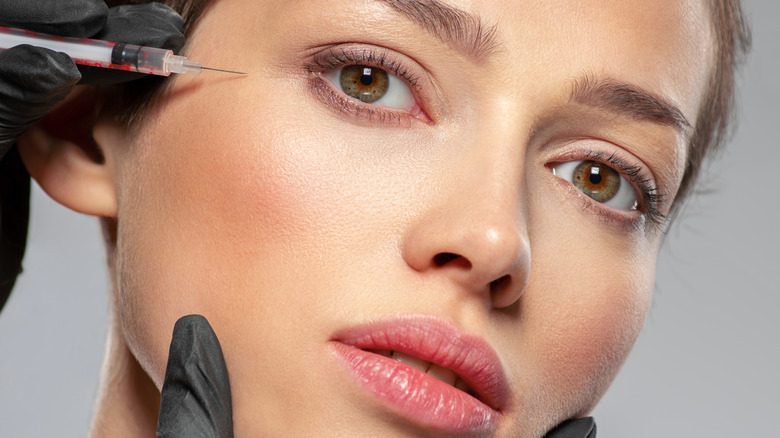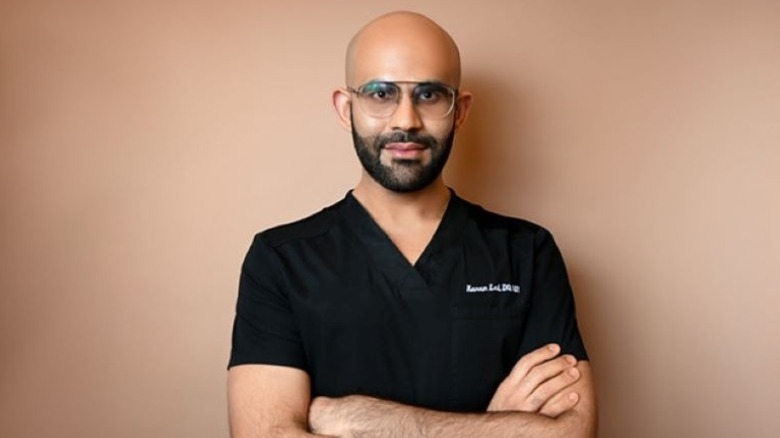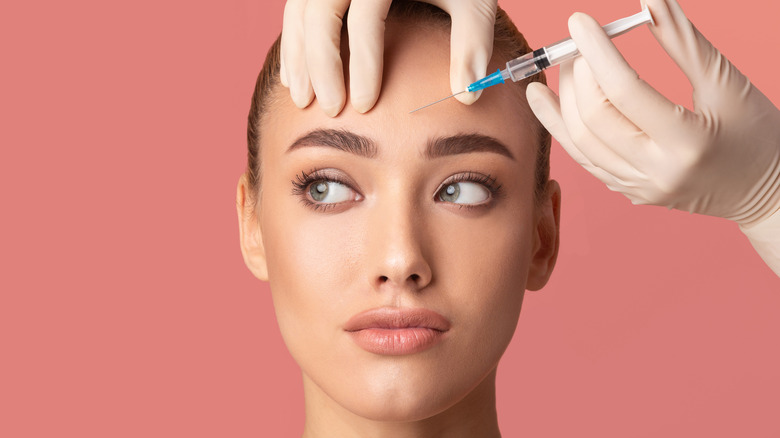What A Dermatologist Wants Young Women To Know About Preventative Botox – Exclusive
First, it's important to accept that fine lines and wrinkles are an inevitable part of life that all of us will develop as we age. While some people prefer to age more naturally without the help of cosmetic procedures, a population prefers to maintain a smoother, line-free complexion for longer. That's where Botox comes into the picture. According to the American Society of Plastic Surgeons (ASPS), Botox is the most popular cosmetic procedure in the U.S., where over 4 million people have used this minimally-invasive procedure to diminish the appearance of fine lines and wrinkles. Though COVID reduced its use from 2019 to 2020, its use has grown by 459% from 2000 to 2020.
In 2005, a survey published by the Aesthetic Surgery Education & Research Foundation (ASERF) reported that women in their 40s and 50s were the largest population to use Botox between the ages of 36 and 60 to "look more relaxed" (via Fox News). However, times are changing, and many young women are using this "wonder drug," per The Conversation. We spoke with board-certified dermatologist Dr. Karan Lal, who specializes in pediatric and adult dermatology in New Jersey to learn more as he is an expert in cosmetic and medical dermatology, per Schweiger Dermatology Group. He is also a member of the DEI work group for the American Society of Dermatologic Surgery, and here, he's telling us all about getting preventative Botox.
Dr. Karan Lal debunks the myth behind young women getting Botox
Botox is the purified, cosmetic form of Botulinum toxin derived from the Clostridium botulinum bacteria that also causes botulism (food poisoning), per Mayo Clinic. Though it is a toxin, it can have benefits when used correctly in small doses to treat medical conditions like migraine and excessive sweating. It works by temporarily paralyzing muscles, so it is commonly used cosmetically to reduce wrinkles.
We spoke with double-board certified adult, pediatric, and fellowship-trained cosmetic dermatologist Dr. Karan Lal to learn more about it. Dr. Lal told The List, "Botox is a neuromodulator. Its purpose is to relax the muscles that cause lines from movement." He added that studies have shown that frequent, persistent treatment with Botox prevents and treats dynamic wrinkles such as forehead lines and the 11 lines.
Recently, Botox's popularity has been booming with a younger crowd. Dr. Lal told us, "It is true that more and more people at younger ages are turning to Botox treatment. Getting Botox early on does prevent the development of dynamic lines such as forehead lines, 11 lines, and even crow's feet." Botox not only softens the appearance of wrinkles but can also prevent the early onset of fine lines.
Dr. Karan Lal explains why so many young women are turning to Botox
You might have thought Botox was for middle-aged people who turn to this minimally invasive cosmetic procedure for a smoother, line-free complexion, but that's not the only case. According to the American Society of Plastic Surgeons, the use of Botox has increased by 28% since 2010 among 20 to 29-year-olds.
When asked why so many young individuals are turning to Botox injections, Dr. Karan Lal told The List, "It's even more common because it's relatively affordable and short term. If people don't like the effects of Botox, they wear off within 3 to 4 months." There is one more advantage of getting Botox early on. "Another benefit to getting Botox early on is- you require less Botox. Because the wrinkles haven't set in or not as deep when one is younger, they require less," added Dr. Lal. He told us Botox helps to soften lines, and as we age, the wrinkles get deeper due to stronger muscles, which can require more Botox to treat them later. There is more to Botox than just diminishing lines. Dr. Lal also said, "Additionally, Botox can help minimize your pores and improve skin texture. When patients get Botox early on, they notice their skin quality is better and pores less noticeable."
Once you have decided to go for Botox, ask all the questions to your physician, and endure to only go to a board-certified dermatologist for the procedure to avoid complications.


